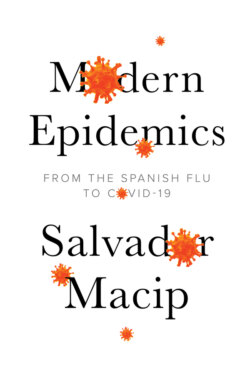Читать книгу Modern Epidemics - Salvador Macip - Страница 31
The ‘Spanish’ flu
ОглавлениеThe first known influenza pandemic is that of 1580 and, since then, there have been about thirty major outbreaks. In the twentieth century, for example, there were four: in 1900, 1918, 1957 and 1968. The pandemic of 1918 deserves special mention, as the last major health catastrophe of the twentieth century to affect the whole world – at least until the onset of AIDS. In terms of the number of victims, it’s considered to rank third among the pandemics (after the Black Death of the Middle Ages and the smallpox that exterminated most of America’s indigenous peoples).
Although the 1918 pandemic is traditionally called ‘Spanish flu’, the part of the globe where it began isn’t known for sure. Spain was the first country to report cases – hence the name. In the debate about its origins, the main suspects are France, the United States, Spain itself and some countries of Asia. The final death toll isn’t clear either. The figures range from 20 to 100 million people, according to different studies or, in other words, up to ten times more than the number of people who died in the First World War. This could signify between 2 per cent and 5 per cent of the total population of the planet (of which possibly 50 per cent was infected), with particularly high rates among people aged between 25 and 45.
Oddly enough, rather than being directly caused by the influenza virus itself, most deaths were the result of pneumonia brought on by bacteria. The virus would have broken through the physical barriers protecting the airways, thereby allowing the bacteria, which are normally on the surface and don’t cause problems, to get inside tissues and end up causing deadly infections. It’s thought that this is partly why the death tolls of the 1957 and 1968 pandemics were much lower (100,000 and 700,000 respectively), because antibiotics to fight secondary bacterial infections were then available to everyone, while they didn’t exist in 1918. The treatments recommended then didn’t go beyond leeches (to suck blood, which was thought to balance the body ‘humours’) or rubbing with menthol, both of which were clearly useless.
Sometimes pandemics have sneaky beginnings. In this case, for example, the first flu outbreak in January 1918 was mild and nobody regarded it as being more serious than a normal flu. By spring that year, it was already crossing the United States, but still no one paid much attention. Meanwhile, in Europe, fully embroiled in the First World War, it was starting to be a more serious problem. That summer, a second outbreak, more serious than the first one, began in Switzerland and reached American shores in September that year. Most cases were clustered in October and November, but a third wave was to appear early in 1919, followed by a fourth and final minor one in the spring of 1920.
The pandemic worsened because of mismanagement by the authorities, a state of affairs that has kept recurring throughout history, to this very day. For example, the US government’s tactic was to downplay it. President Woodrow Wilson didn’t make a single declaration about the situation. The authorities asserted that there was no reason to be alarmed if proper precautions were taken. The government said it didn’t want the population to feel demoralized because ‘fear kills more people than the disease’, as a public health commissioner in Chicago put it. The aim was to make Americans believe that the pandemic was nothing worse than seasonal flu. Yet the symptoms were very different. Some infected people died within twenty-four hours, bleeding from their eyes and ears. The number of victims was rising by the day, but the authorities kept insisting that the outbreak was ending. The effect was exactly the opposite of what they hoped for: people in the United States lived in a state of fear, unable to trust the media and attentive only to rumours. They stopped going to work, shops closed, and the transport, food distribution, shops, medical treatment and communication systems all broke down. Only a few cities, San Francisco among them, decided to break the code of silence and alert the population in order to avoid total collapse.
